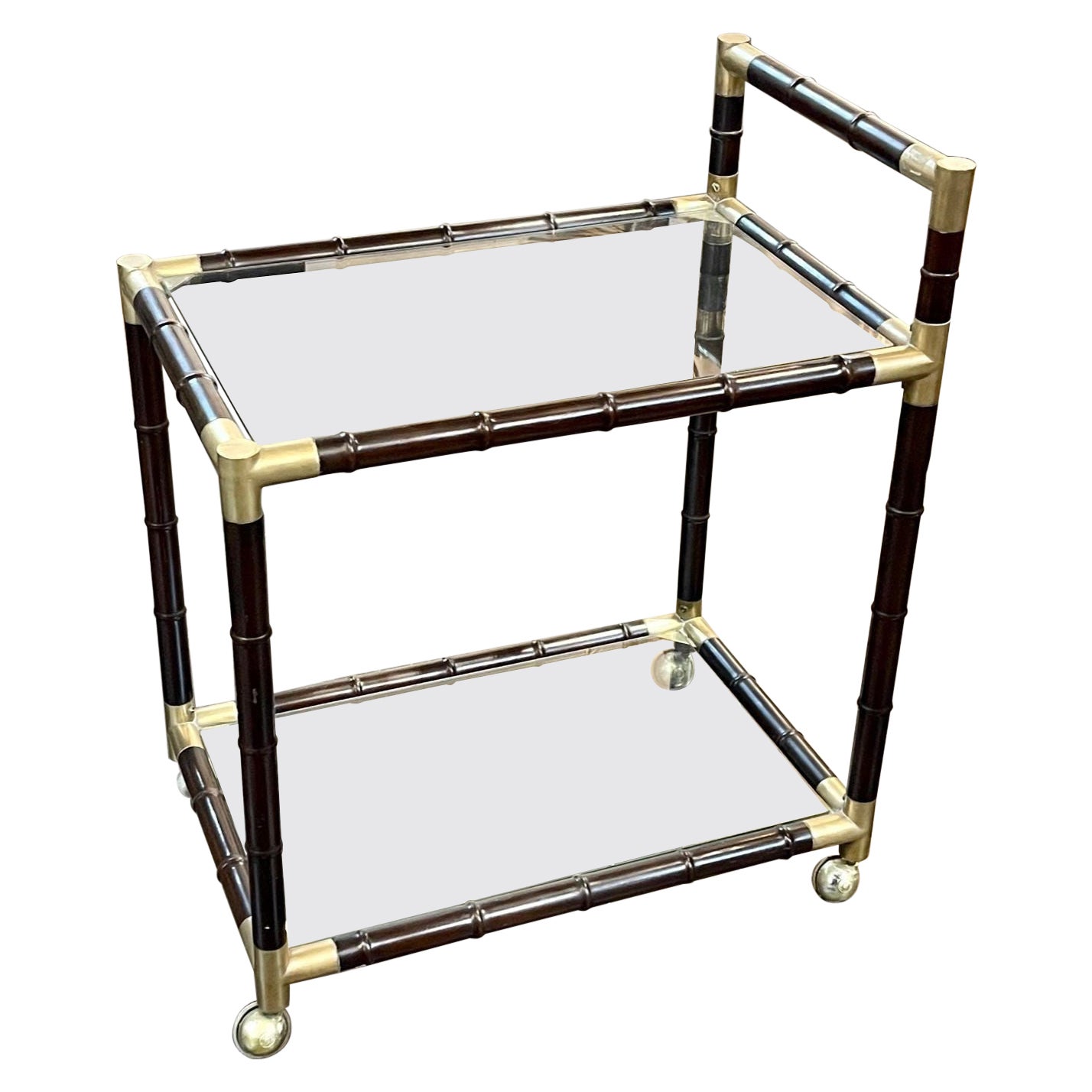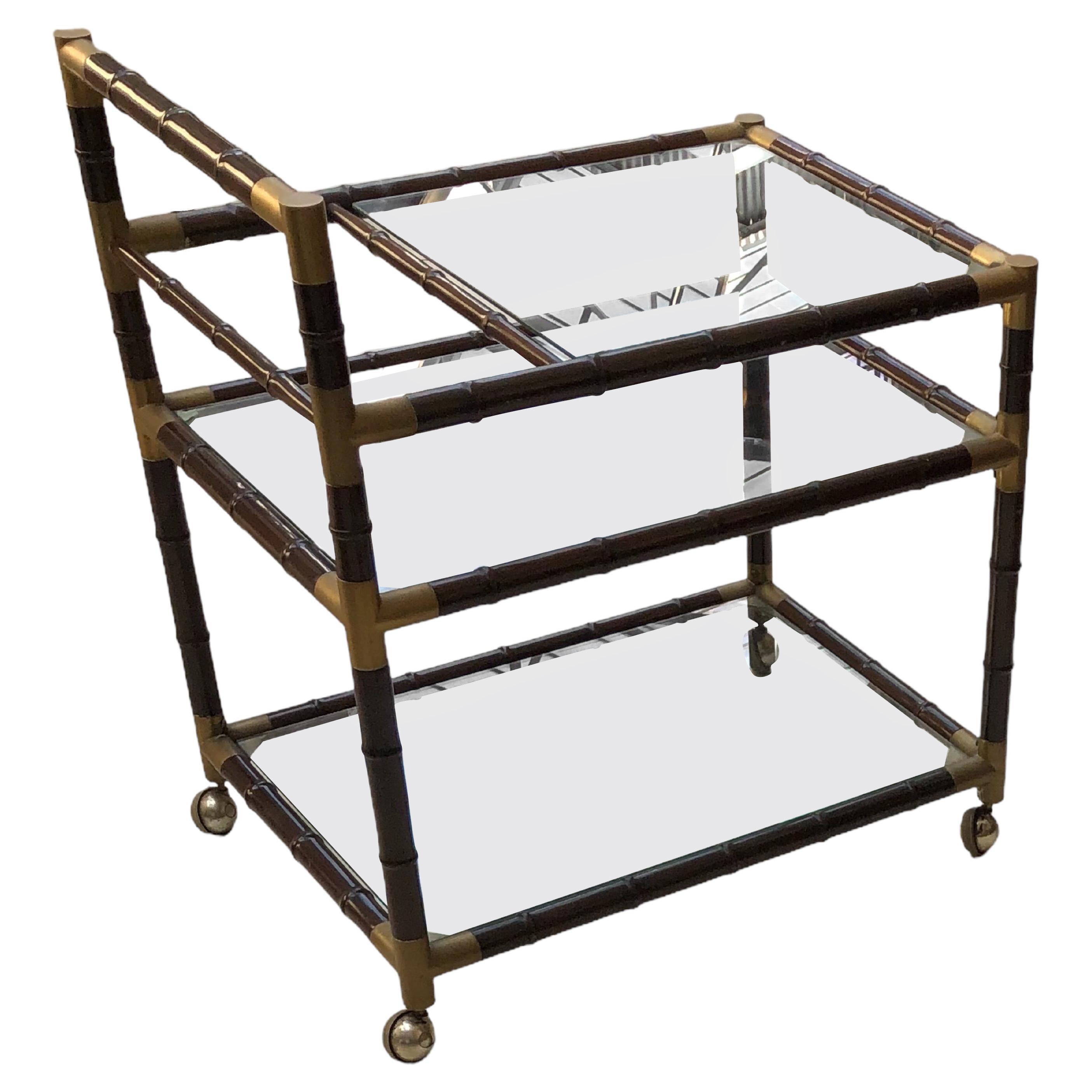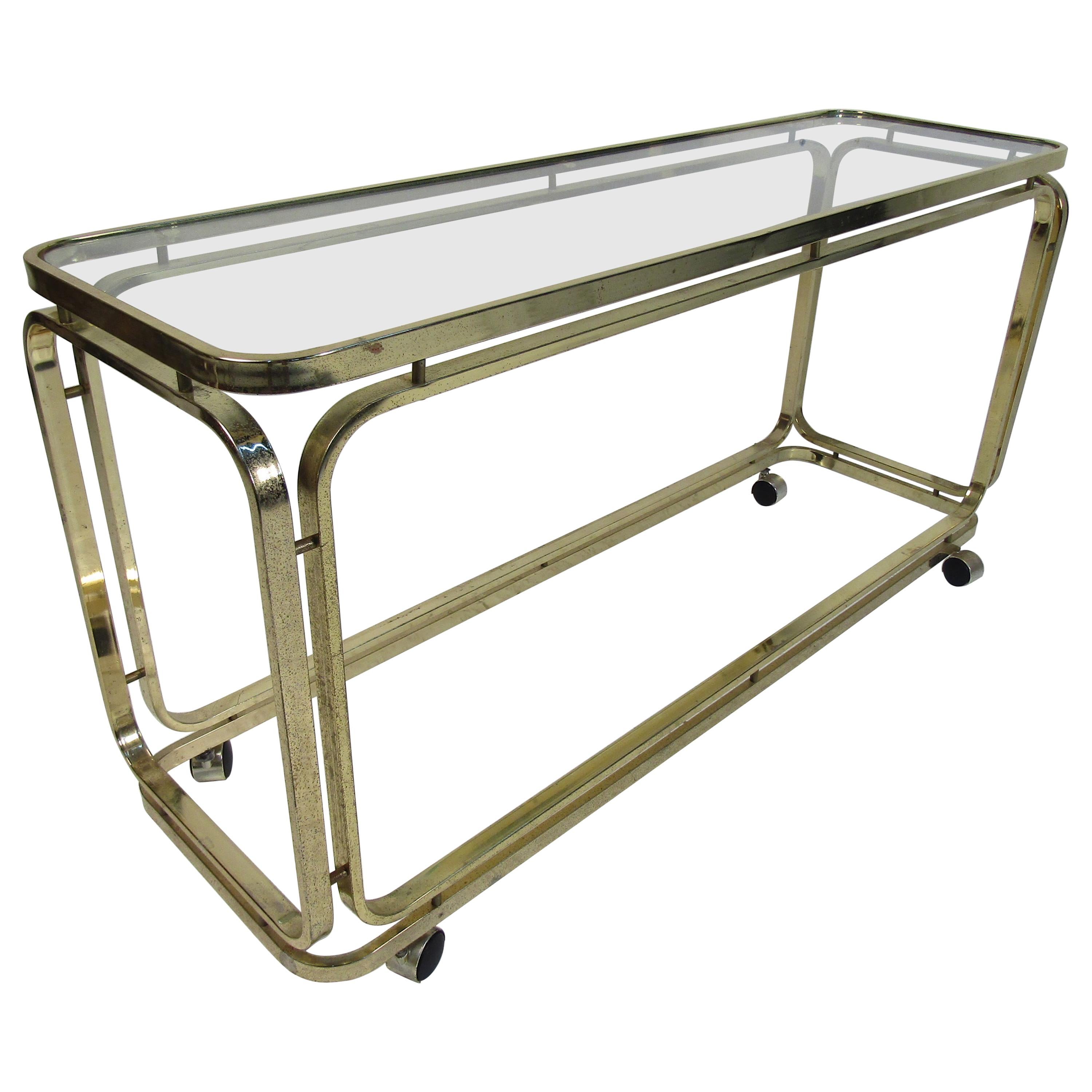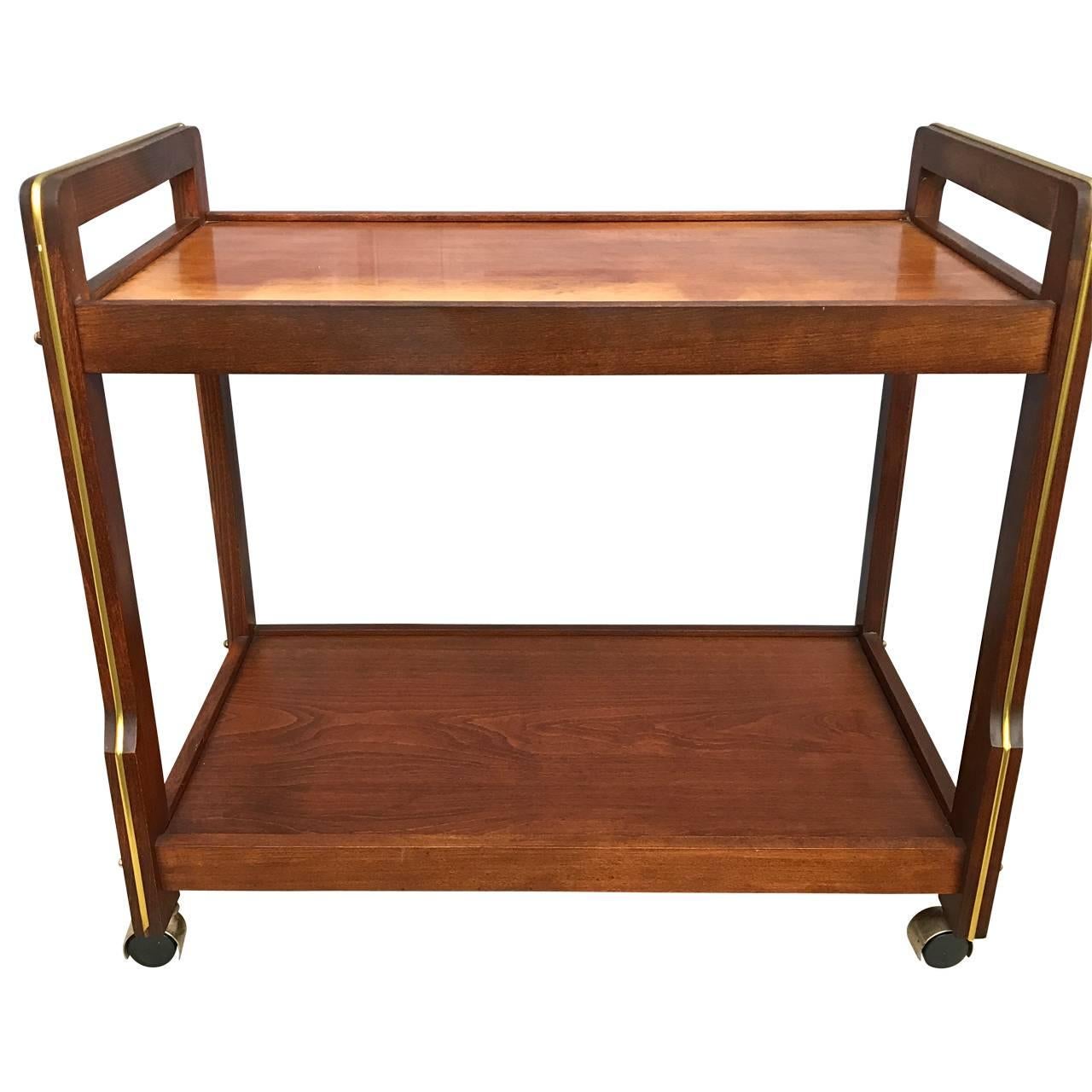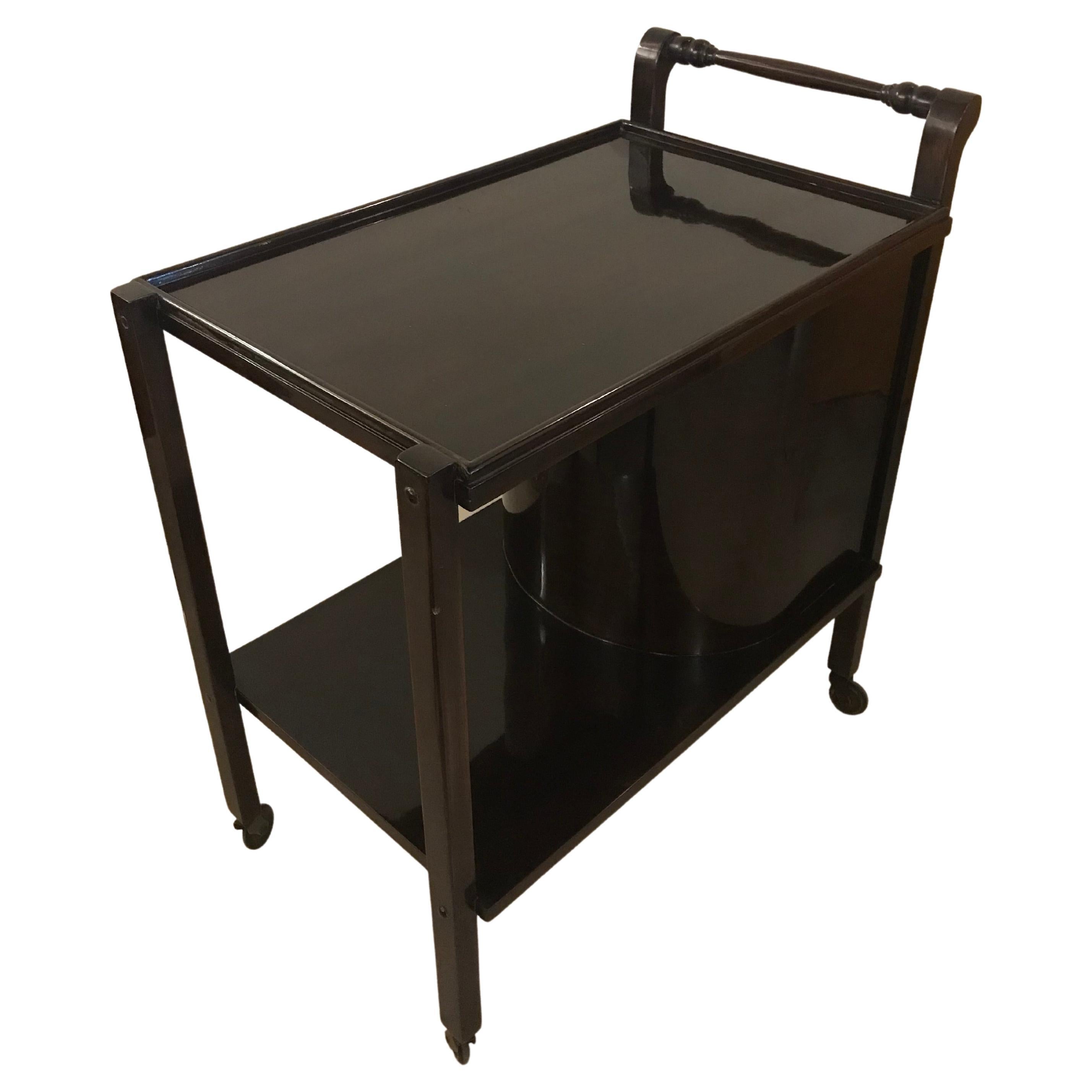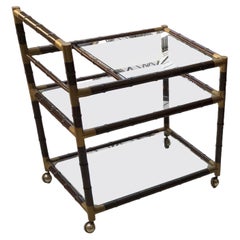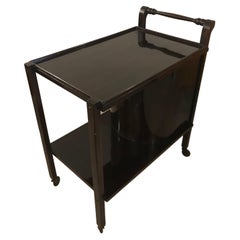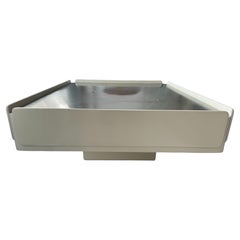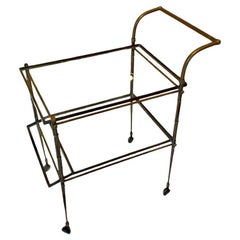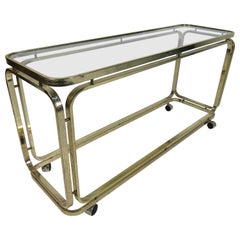Video Loading
Want more images or videos?
Request additional images or videos from the seller
1 of 10
Bar with Wood and Bronze
$6,500
£4,936.91
€5,703.76
CA$9,109.98
A$10,195.79
CHF 5,321.42
MX$124,336.04
NOK 68,106.89
SEK 64,471.90
DKK 42,566.42
Shipping
Retrieving quote...The 1stDibs Promise:
Authenticity Guarantee,
Money-Back Guarantee,
24-Hour Cancellation
About the Item
Bar
Year: 1960
Country: American
Wood and bronze
It is an elegant and sophisticated bar
We have specialized in the sale of Art Deco and Art Nouveau styles since 1982.If you have any questions we are at your disposal.
Pushing the button that reads 'View All From Seller'. And you can see more objects to the style for sale.
"Billy Haines "
It's the kind of irony William Haines would have savored: On the centennial of his birth this wisecracking, self-taught, maverick actor-decorator is in vogue once again. Born January 1, 1900, he used to call himself "a true child of the twentieth century"—and now, as his furniture becomes a hot ticket for collectors, it looks as if he'll be around for the twenty-first.
He was always a fiercely contemporary man. The number-one box office star of 1930, William "Billy" Haines went on to become Hollywood's premier interior decorator until his death in 1973. Dispatching with convention early, he ran away from home at fourteen and opened a dance hall in a Virginia boomtown. Later, in Hollywood, he lived openly with another man for nearly fifty years, a union much of Hollywood envied for its longevity. Always quick with the quip, he turned out to pasture tawdry arbiters of silent-screen taste like Elinor Glyn and set about creating a whole new fashion. By 1931, when Cecil Beaton deigned to visit the movie colony, he was relieved to see "ostrich-feather trimming, swan's down, and Pierrette pompoms" fallen from popularity and credited Haines's "unusual flair" with making Hollywood suddenly "distinctive, contemporary in spirit, and sophisticated."
Working closely with such architects as James E. Dolena, Roland E. Coate and, later, A. Quincy Jones, Haines transformed the very look of Hollywood. What made his décors so popular—and imitated—was his balance between formal and casual, style and substance. Haines and his designers Ted Graber and Michael Morrison created sleek, classic pieces that were triumphs of form and function. Swivel hostess chairs and low-table ottomans set the look, while at the same time offering partygoers easy access to banter and flirtation.
"Billy Haines was interested in how people live," said Jean H. Mathison, his longtime assistant. "He wasn't interested in designing just for snob appeal."
Best friend and client Betsy Bloomingdale agreed. "He designed all of my pieces low to the floor. That way the people were grander, not the furniture."
His style befitted his own quirky personality. For pal Joan Crawford's living room, Haines—as ever, bucking convention—dared to go all white. Then he reversed himself and splashed brilliant colors throughout for Carole Lombard.
It's the link to an increasingly evanescent old Hollywood that accounts for much of Haines's enduring appeal. But it also has something to do with the man himself, a man who looked at difference as opportunity. Now, with a movie based on his life in the works, Billy Haines and his oeuvre seem poised for the new millennium.
"Quality tells," he said. "You can gussy up and hide things behind veils and ruffles and suedes, but . . . the truth comes out. You had better know what you are doing, if you want to last."
Why are there so many antiques in Argentina?
In the 1880 – 1940 there was a grate wave of immigration encouraged by the periods of war that were taking place.
1st World War took place between 1914 and 1918
2nd World War took place between 1939 and 1945
The immigrants options were New York or Buenos Aires. Tickets were cheap and in Buenos Aires they were welcomed with open arms, as it was a country where everything was still to be done.
Argentina was the country of new opportunities, labour was needed and religious freedom was assured, in many cases the of the family travel first until they were settled and then the rest of the family members join them.
In the immigrant museum “Ellis Island Immigrant Building” in New York you can se the promotional posters of the boats that would take them to a new life.
Between the years 1895 and 1896, Argentina had the highest DGP (gross domestic product) per capita in the world according to the Maddison Historical Statistics index, this situation arose due to the large amount of food being exported to European countries, which were at war.
The Argentinean ships left the port of Buenos Aires with food, but they returned with furniture, clothes and construction elements, (it´s common to see this the old buildings of the historic neighbourhood of San Telmo, the beams with the inscription “Made in England)”, as well as many markets that were built in Buenos Aires, such us the San Telmo Market, whose structure was brought by ship and afterwards assembled in 900 Defensa Street.
With the great influence of European immigrants living in the country, the children of the upper classes travelled to study in France, resulting in the inauguration of “La Maison Argentinienne”, on 27th of June 1928, in the international city of Paris, which hosted many Argentinians that were studying in Frace.
It´s the fourth house to be built after France, Canada and Belgium, being the first Spanish-speaking one. Still in place today (17 Bd Jourdan, 75014, Paris, France). Many of the children of these wealthy families who attended international art exhibitions, museums and art courses abroad, took a keen interest in the European style. This is why Buenos Aires was at the time referred as “The Paris of South America”.
Between the years 1890 and 1920 more than a hundred Palaces were built on Alvear Avenue the most exclusive avenue in Buenos Aires. Today some of these palaces have been transformed into museums, hotels and embassies.
In the year 1936, the Kavanagh building was inaugurated, it was the tallest reinforced concrete building in South America.
During 1994 the American Society of Civil Engineers distinguished it as an “international engineering milestone”, and it´s now considered a World Heritage of Modern Architecture.
At the time was common to hire foreign architects such as Le Corbusier, who visited Buenos Aires/Argentina in 1929 and in 1948 he drew up the blueprints for a house built in La Plata City (which was declared a World Heritage Site).
In 1947, the Hungarian architect Marcelo Breuer designed “Parador Ariston” in the seaside city of Mar del Plata. After an Argentinean student at Harvard University convinced him to come to Argentina. He worked on an urban development project in the Casa Amarilla, area of La Boca.
The Ukrainian architect, Vladimiro Acosta, arrives in Argentina in 1928 and worked as an architect until que moved to Brazil.
Antonio Bonet, a Spanish architect who worked with Le Corbusier in Paris, arrives in Argentina in 1937, where he carried out several architectural works and in 1938 designs the well-known BFK chair.
Andres Kálnay, of Hungarian origin, made around 120 architectural masterpieces, among which the former Munich brewery stands out, he even made the furniture’s design.
The German architect, Walter Gropius, director of the Bauhaus, lived in Argentina, where he wrote articles for “Sur” magazine and founded in Buenos Aires, an architectural firm with Franz Möller, who was also an architect, where he built two houses.
At the same time several famous designers decided to immigrate to Argentina, among them we can find the well-known French designer, Jean-Michel Frank, who arrived in the country in 1940 and also worked for the Rockefeller family.
Special pieces were made, which were sold exclusively in the country, such as the well-known German company “WMF”, who sold their products by catalogue, which were chosen by the ladies of high society in the list of wedding gifts, as well as the pieces designed by Christofle.
The Swiss sculptor Alberto Giacometti, made special pieces for Argentinean mansions.
In 1904 the first Jansen branch outside Paris was established in Buenos Aires, as the Argentinean clientele demanded a large amount of furniture, from the end of the 19th century to the mid-20th century.
In 1970, the brand Rigolleau Argentina made pieces authorised by Lalique.
The brands Maple and Thompson also set up shop in the country.
The French plastic artist, Marcel Duchamp moved to Argentina in 1918-1919.
Glass signed Gallé, Charder, Leverre, Schneider, Muller and other French firms. They were bought in flower shops and were given to ladies with beautiful floral arrangements.
Some furniture manufacturers travelled to international fairs and bough the patterns to produce the furniture in Argentina, such as the furniture firm Englander and Bonta, who bought the patterns ins Italy.
It is worth mentioning that in Argentina we have the largest community of Italians outside of Italy, as it is estimated that 70 percent of the inhabitants have at least one Italian descendant, followed by Spanish immigrants.
The most Important furniture stores in Argentina:
Comte is founded in 1934 (under the direct management of Jean Michel Frank in 1940).
Nordiska (Swedish company established in 1934).
Churba in 1960, a company that brought foreign designers to present their furniture in the country:
Denmark: (Arne Jacobsen, Finn Juhl, Bender Madsen, Ejner Larsen, Poul Kjaerholm, Hans Wegner)
Sweden: (Hans Agne Jakobsson, Gustavsberg)
United States: (Herman Miller)
Finland: (Lisa Johansson, Folke Arstrom, Tapio Wirkkala, Alvar Aalto, Timo Sarpaneva)
Swedish Factory: (Orrefors)
Italy: (Littala, Vico Magistretti, Emma Gismondi, Gae Aulenti, Angelo Mangiarotti, Elio Martinelli, Gianna Celada, Angelo Mangiarotti, Mario Bellini, Carlo Scarpa)
Finland: (Olivia Toikka)
Plata Lappas (Lappas Silver): a goldsmith shop founded in 1887 in Argentina by Alcibiades Lappas of Greek origin.
In 2019, in Argentina took place “the Art Deco world congress”, in which we participated as hosts invited by Geo Darder, founder of the Copperbridge – Foundation, in which prominent people from all over the world attended to learn about Art Deco in Argentina.
Argentina currently has more than 100 Art Deco buildings and another 90 Art Nouveau buildings throughout the city of Buenos Aires.
Argentina is a country that has not been involved in many wars, which is why it has been a refuge for works of art and antiques from different periods of time, unlike European countries. That is way many collectors, museums and antique dealers from all over the world visit it, you should not miss the opportunity to visit this great country.
Laura Guevara Kjuder, architect.
- Dimensions:Height: 25.2 in (64 cm)Width: 23.43 in (59.5 cm)Depth: 16.82 in (42.7 cm)
- Style:Mid-Century Modern (Of the Period)
- Materials and Techniques:
- Place of Origin:
- Period:
- Date of Manufacture:1960
- Condition:Wear consistent with age and use.
- Seller Location:Ciudad Autónoma Buenos Aires, AR
- Reference Number:Seller: F-TO-1stDibs: LU6785234886772
About the Seller
5.0
Vetted Professional Seller
Every seller passes strict standards for authenticity and reliability
Established in 1982
1stDibs seller since 2022
37 sales on 1stDibs
Typical response time: <1 hour
- ShippingRetrieving quote...Shipping from: Ciudad Autónoma Buenos Aires, Argentina
- Return Policy
Authenticity Guarantee
In the unlikely event there’s an issue with an item’s authenticity, contact us within 1 year for a full refund. DetailsMoney-Back Guarantee
If your item is not as described, is damaged in transit, or does not arrive, contact us within 7 days for a full refund. Details24-Hour Cancellation
You have a 24-hour grace period in which to reconsider your purchase, with no questions asked.Vetted Professional Sellers
Our world-class sellers must adhere to strict standards for service and quality, maintaining the integrity of our listings.Price-Match Guarantee
If you find that a seller listed the same item for a lower price elsewhere, we’ll match it.Trusted Global Delivery
Our best-in-class carrier network provides specialized shipping options worldwide, including custom delivery.More From This Seller
View AllBar with Wood , glass and Bronze
Located in Ciudad Autónoma Buenos Aires, C
Year: 1960
Country: American
Wood and bronze
It is an elegant and sophisticated bar
We have specialized in the sale of Art Deco and Art Nouveau styles since 1982.If you have any ques...
Category
Vintage 1960s American Hollywood Regency Carts and Bar Carts
Materials
Bronze
Bar in wood Style: Art Deco, France, 1920
Located in Ciudad Autónoma Buenos Aires, C
Amaizing Bar
Materials: wood
Style: Art Deco
If you want to live in the golden years, this is the bar that your project needs.
We have specialized in the sale of Art Deco and Art ...
Category
Vintage 1930s French Art Deco Carts and Bar Carts
Materials
Wood
Bar 1950
Located in Ciudad Autónoma Buenos Aires, C
Amaizing bar
Materials: wood and glass
Style: Art Deco
If you want to live in the golden years, this is the bar that your project needs.
We have specialized in the sale of Art Deco...
Category
Vintage 1950s Danish Mid-Century Modern Carts and Bar Carts
Materials
Wood, Glass
$8,000
Bar in wood and steel, 1962
Located in Ciudad Autónoma Buenos Aires, C
Amaizing bar
If you want to live in the golden years, this is the bar that your project needs.
We have specialized in the sale of Art Deco and Art Nouveau and Vintage styles since 1...
Category
Vintage 1960s Italian Mid-Century Modern Carts and Bar Carts
Materials
Steel
$22,000
Amaizing Bar in Bronze and Wood, Style: Art Deco, Italian
Located in Ciudad Autónoma Buenos Aires, C
Amaizing Bar
Material: bronze and wood
Style: Art Deco
Country: Italy
If you want to live in the golden years, this is the bar that your project needs.
We have specialized in the ...
Category
Vintage 1930s Italian Art Deco Carts and Bar Carts
Materials
Bronze
Bar in bronze and glass Style: Art Deco, France, 1920
Located in Ciudad Autónoma Buenos Aires, C
Amaizing Bar
Materials: bronze and glass
Style: Art Deco.
If you want to live in the golden years, this is the bar that your project needs.
We have specialized in the sale of Art D...
Category
Vintage 1920s French Art Deco Carts and Bar Carts
Materials
Bronze
You May Also Like
Italian Mid-Century Modern Brass and Bamboo Form Bar Cart
Located in Dallas, TX
Very nice Italian Mid-Century Modern brass and bamboo form bar car. The piece has 2 glass shelves and is on casters. Decorative as well as useful!
Category
Mid-20th Century Italian Mid-Century Modern Carts and Bar Carts
Materials
Brass
$2,360 Sale Price
20% Off
Rare Serving table Faux Bamboo
By Ico Parisi
Located in Brussels, BE
Rare Serving Bar, or Bar trolley in bronze, brass and glass From early 1950. Made in Italy In the style of, Ico Parisi Or Gio Ponti......
Very good and original condition.
Category
Vintage 1950s Italian Mid-Century Modern Serving Tables
Materials
Brass, Bronze
Mid-Century Modern Bar Cart
Located in Brooklyn, NY
Long rolling cart in polished brass with two shelves. Used as a bar cart or rolling console table.
(Please confirm item location - NY or NJ - wi...
Category
Vintage 1960s Mid-Century Modern Carts and Bar Carts
Materials
Brass
$1,330 Sale Price
30% Off
Mid-Century Wooden Bar Cart
Located in Haddonfield, NJ
Mid-Century Danish bar cart with plastic covered brass decorations. Top tray has sun related discoloration which appears to be a charming addition to a Classic Mid-Century design.
Category
Mid-20th Century Danish Mid-Century Modern Carts and Bar Carts
Materials
Wood
Italian Midcentury Trolley Bar in Bamboo
Located in bari, IT
Liquor bottle trolley in bamboo cane with shelves in light walnut wood from mid sixties.
Category
Vintage 1960s Italian Mid-Century Modern Serving Tables
Materials
Bamboo, Walnut
Brass Faux Bamboo 2-Tier Side Accent Table, Drinks Trolley or Cart, French 1970s
By Maison Baguès
Located in London, Fitzrovia
A stylish 1970s French brass faux bamboo and smoked glass 2-tier accent, side or end table, drinks trolley or cart. Possibly by Baguès. Untouched, unpolished,on wheels.
Please note t...
Category
20th Century French Mid-Century Modern Carts and Bar Carts
Materials
Brass
More Ways To Browse
Gold Bar Box
Italian Bar Large
Lalique Bronze
Vintage Kitchen Table And Chairs
Glass And Wood Dining Table Brazilian
Kitchen Table And Chairs Used
Tell City Used Furniture
Bronze Giacometti Table
Table With Swan Base
Italian Swan Table
E Bellini
Bamboo And Glass Table And Chairs
Art Deco Bamboo Table
E Thompson
Angelo Mangiarotti Bronze Table
Swan Down
Vintage Kitchen Posters
German Bar Cart
